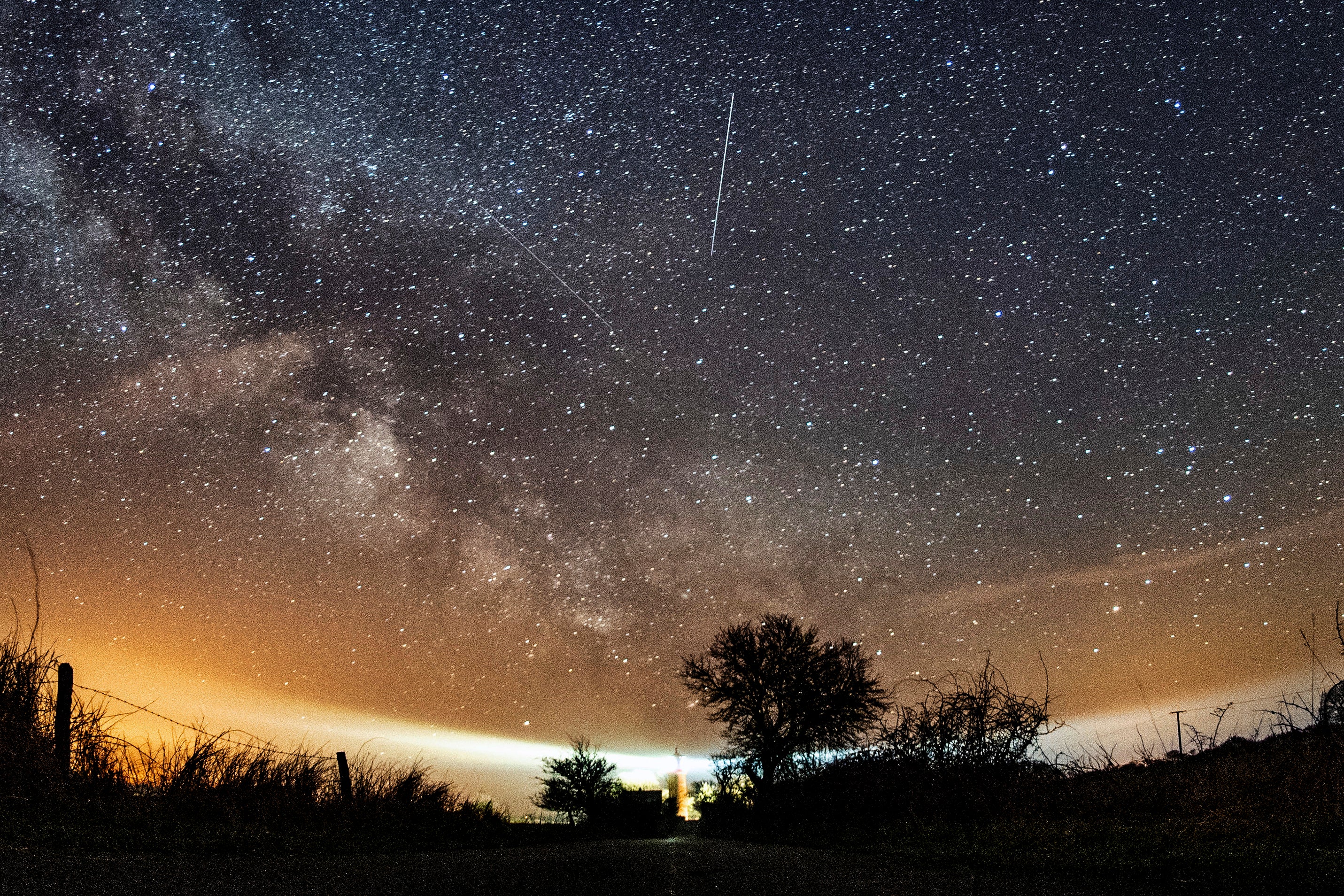The Lyrid meteor shower peaks this weekend, but it may be hard to see it
The Lyrid meteor shower is here

Your support helps us to tell the story
This election is still a dead heat, according to most polls. In a fight with such wafer-thin margins, we need reporters on the ground talking to the people Trump and Harris are courting. Your support allows us to keep sending journalists to the story.
The Independent is trusted by 27 million Americans from across the entire political spectrum every month. Unlike many other quality news outlets, we choose not to lock you out of our reporting and analysis with paywalls. But quality journalism must still be paid for.
Help us keep bring these critical stories to light. Your support makes all the difference.
The Lyrid meteor shower is underway. But with a nearly full moon in the sky during the peak, it might be tough to see clearly.
The Lyrids occur every year in mid-to-late April. This year's peak activity happens Sunday into Monday, with 10 to 20 meteors expected per hour. Viewing lasts through April 29.
Here's what to know about the Lyrids and other meteor showers.
What is a meteor shower?
Multiple meteor showers occur annually and you don’t need special equipment to see them.
Most meteor showers originate from the debris of comets. The source of the Lyrids is the comet Thatcher.
When rocks from space enter Earth’s atmosphere, the resistance from the air makes them very hot. This causes the air to glow around them and briefly leaves a fiery tail behind them — the end of a “shooting star.”
The glowing pockets of air around fast-moving space rocks, ranging from the size of a dust particle to a boulder, may be visible in the night sky.
How to view a meteor shower
Meteor showers are usually most visible between midnight and predawn hours, and don’t require special equipment. Just look up.
It’s easier to see shooting stars under dark skies, away from city lights. Meteor showers also appear brightest on cloudless nights when the moon wanes smallest.
“Look to the northeast and just keep staring at the same spot in the sky" to see the Lyrids, said University of Warwick astronomer Don Pollacco. ”It's always impressive when you see these things."
The clearest sighting for the Lyrids is in the Northern Hemisphere, but moonlight will interfere with viewing, according to the American Meteor Society.
Under ideal conditions, "the meteors often appear very bright with bluish trails and often the trails seem to hang around for a few seconds in the sky," said Pollacco.
When is the next meteor shower?
The meteor society keeps an updated list of upcoming large meteor showers, including the peak viewing days and moonlight conditions.
The Eta Aquarids meteor shower peaks in early May with best viewing in the Southern Hemisphere. The shower is caused by debris from Halley's comet.
___
The Associated Press Health and Science Department receives support from the Howard Hughes Medical Institute’s Science and Educational Media Group. The AP is solely responsible for all content.
Subscribe to Independent Premium to bookmark this article
Want to bookmark your favourite articles and stories to read or reference later? Start your Independent Premium subscription today.